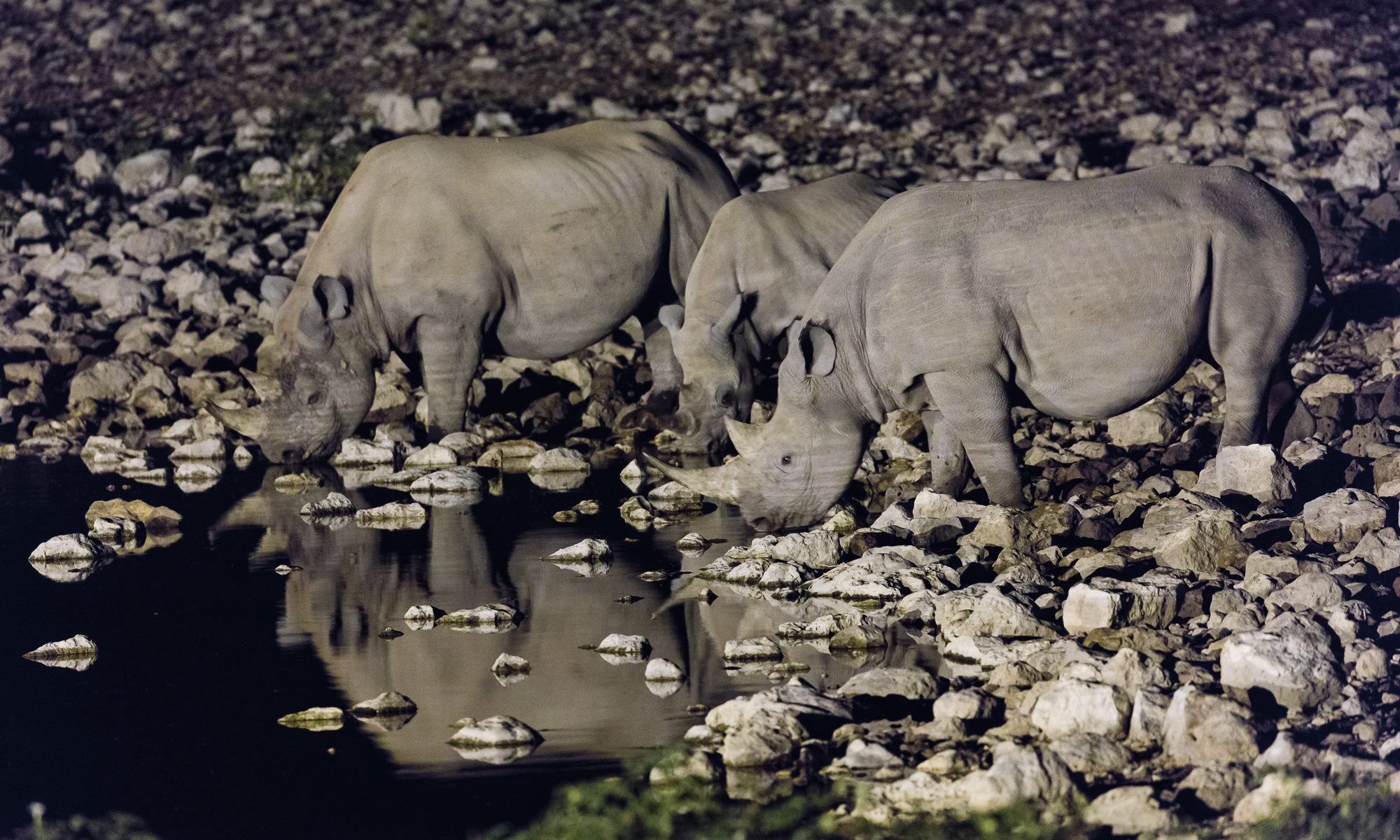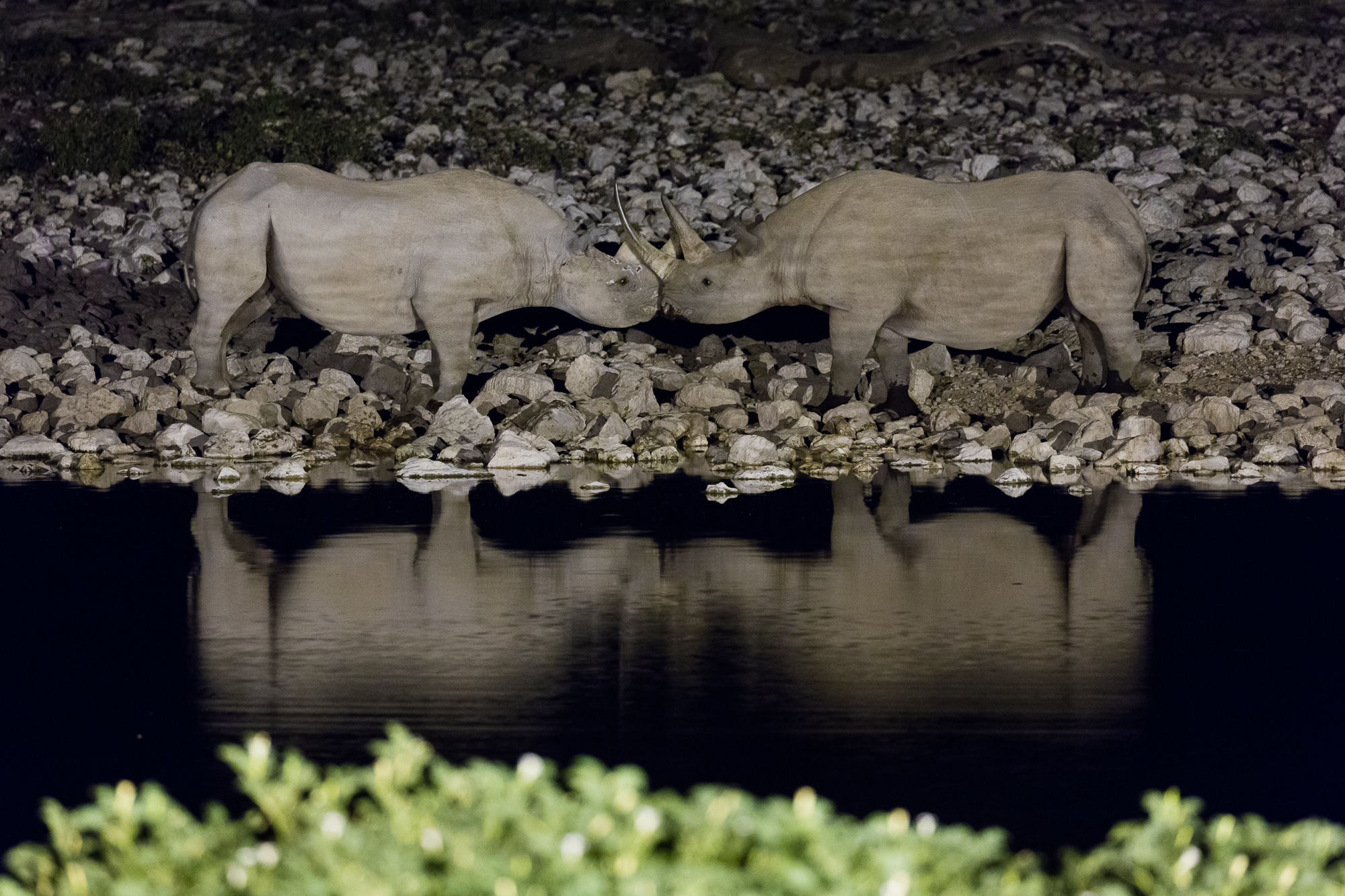
The endangered black rhino was long thought to be solitary and territorial, usually alone and resting most of the day in deep brush. On a recent trip to Namibia, I was hoping to see one of these rare creatures in the wild. With a worldwide wild population of only 5000, I wasn’t sure how easy it would be to see one. Not only did I get my wish, but what I saw was counter to every description I’ve read about these animals.
I was traveling with a group through Namibia, photographing both wildlife and the incredible landscapes of that country. We spent a couple of nights in Etosha National Park, a stop on every wildlife tourist’s “todo” list. Okaukuejo camp features a natural waterhole that is kept floodlit all night. This allows visitors to view the amazing variety of wildlife that frequents the waterhole only at night. Knowing that the black rhino makes itself scarce during the day, I was hoping for a nocturnal sighting.
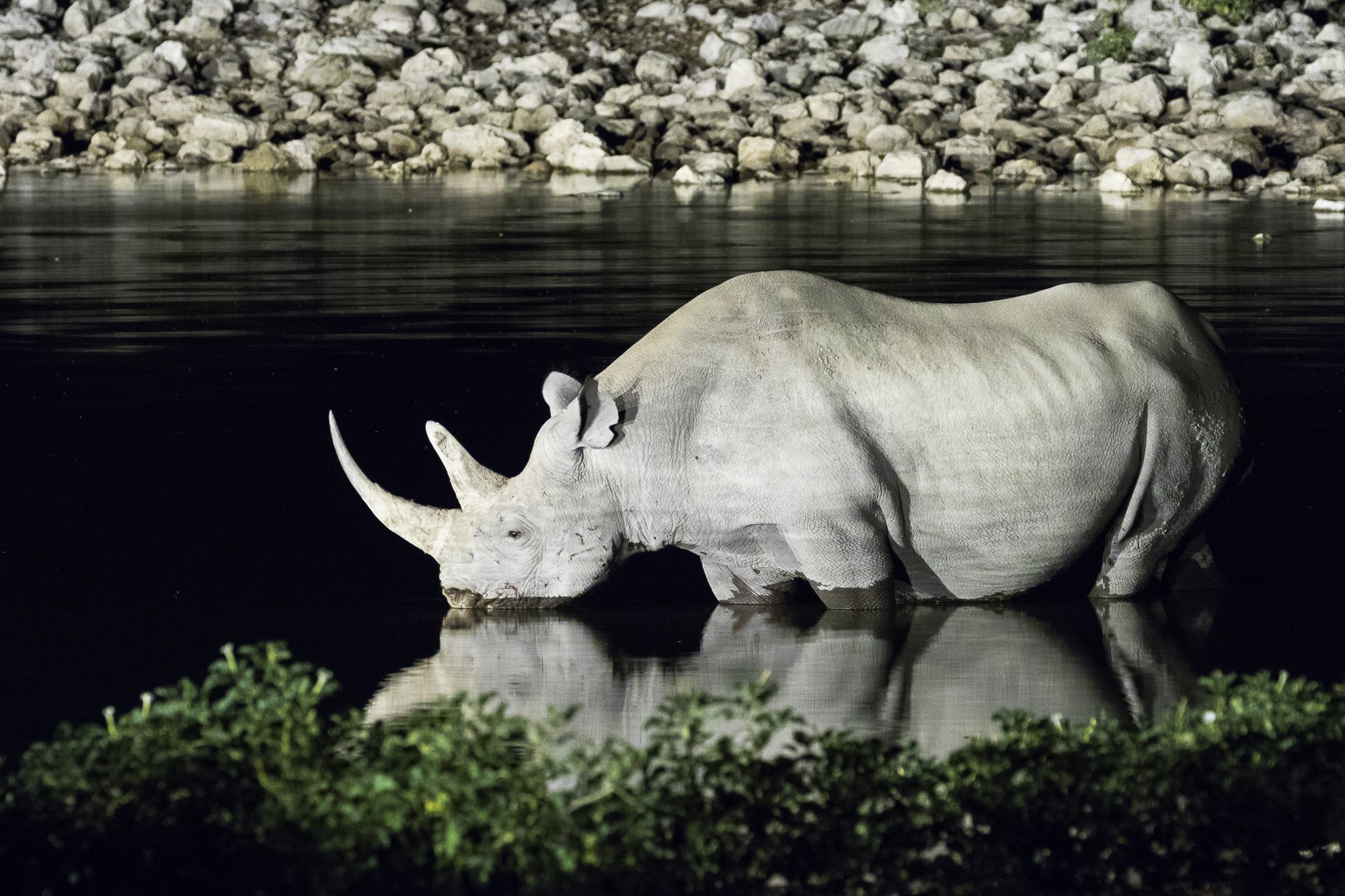
I waited and waited long into the night, with nothing to show for my weariness. I had a tripod mounted Canon 100-400mm lens with a new 50 megapixel Canon 5DSr attached to the back. At about 3:00 in the morning, just as I was about to pack up my gear, the silent darkness was disturbed by an incredibly loud crunching sound. Suddenly, an impossibly large form emerged from the brush a mere 50 yards from my position. My heart leapt into my throat – it was a black rhino!
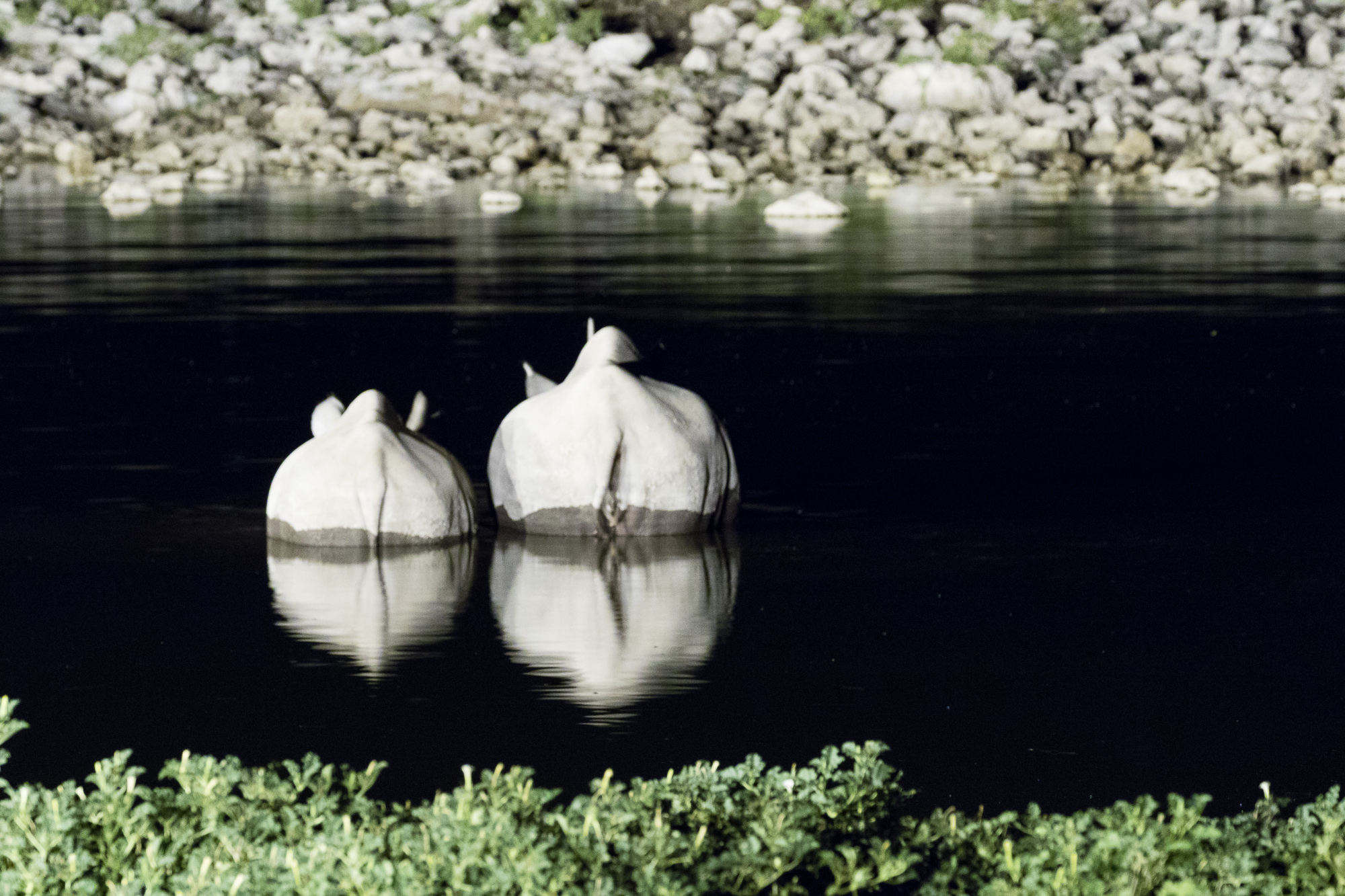
Even more surprising was the baby rhino that followed closely behind. I couldn’t believe my luck in seeing not one but two of these rare creatures. After drinking by the water’s edge, the mother walked into the water to bathe. Soon her timid baby followed, and they ventured into water up to their stomachs, drinking as they went.
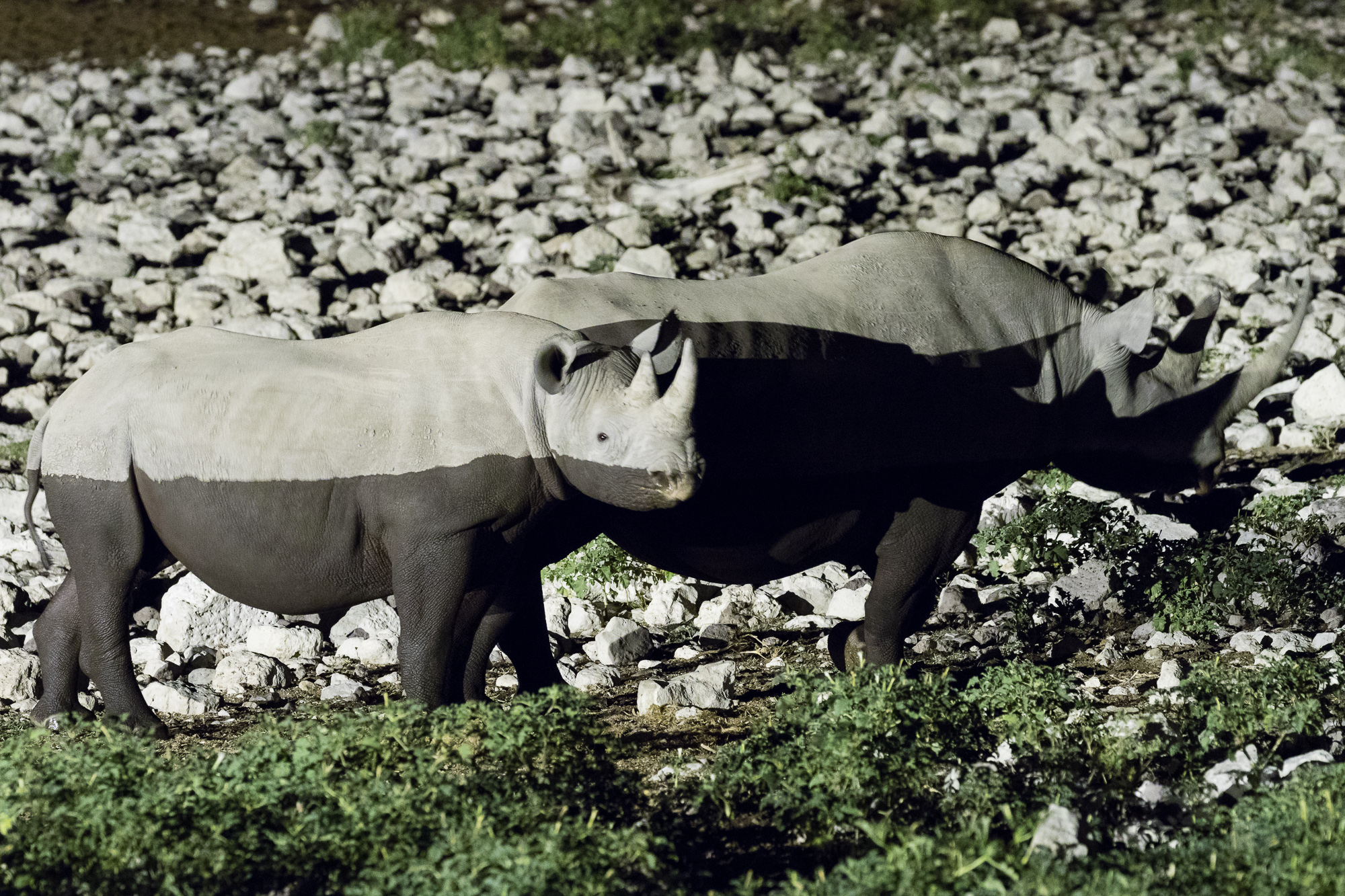
As they emerged from the water, they looked like some kind of strange half-white, half-black creature, as the water and washed away all the dust from the surrounding landscape. After a few more minutes, they wandered back into the brush, content. I was certainly happy to have lucked out on my first night, but was hopeful to see them again the next night, now that I knew they were in the area.
The next night I didn’t have to wait long. Soon after sunset, two rhinos emerged from the brush. These were two full grown adults, and based on the lack of a baby, I figured that neither of these was the mother from the night before. After a quick drink, the two faced each other. Expecting some kind of fierce territorial battle, I was shocked to see them rub their faces against each other (see lead photo). Exchanging soft grunts (or at least as softly as a huge beast like this can grunt), they stood like this for several moments, touching horns and nuzzling each other. This certainly didn’t look like the solitary hermits I had read about before my trip!
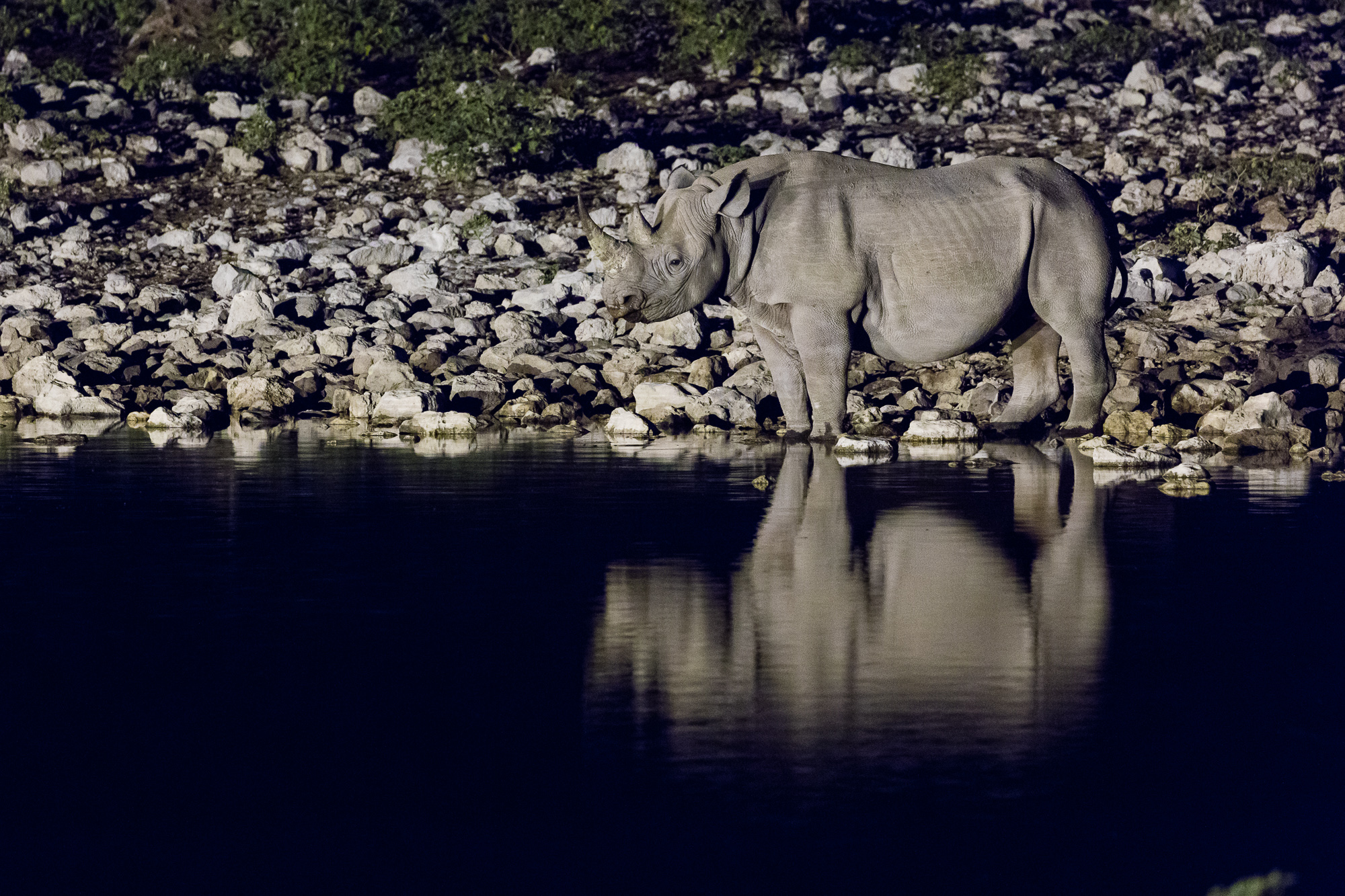
As I was watching these two, the mother and baby from the night before came to the edge of the water. Finally, a fifth black rhino joined the party by the waterhole. At this point, I was expecting a confrontation of some sort, having seen protective wild animal mothers with their babies before. Surely one of these large adults would get too close to the baby and then the action would start!
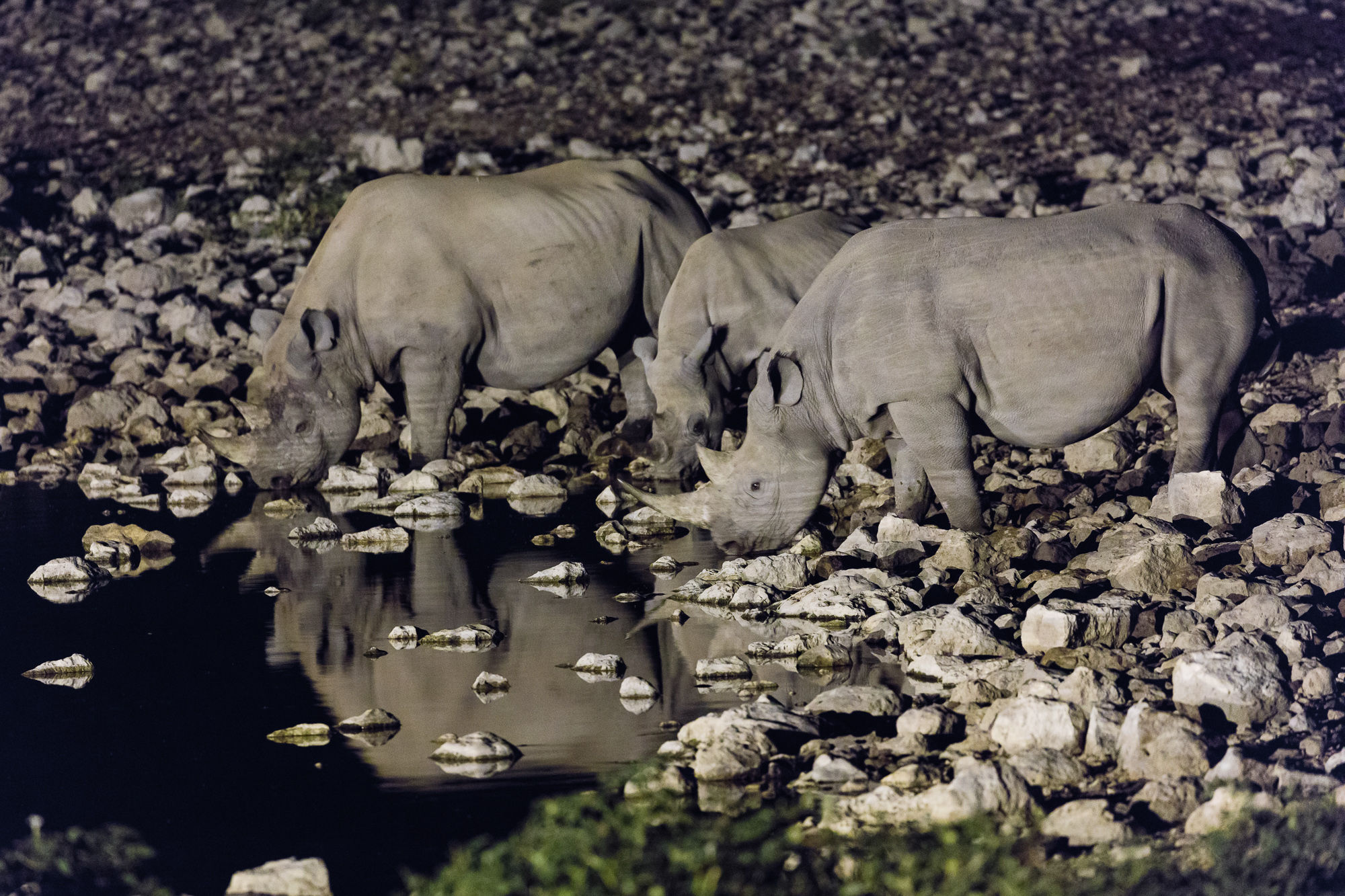
Not only did none of that happen, but the five rhinos seemed almost sweet with each other. For the next half an hour, these nocturnal socialites drank and mingled, exchanging pleasantries (read: more grunting at each other). The baby was free to wander among the other rhinos. Before they left, I caught a quick video of them all together.
With my only experience consisting of two nights, I have no idea how rare or common it was to see this type of behavior. But rare or not, I was in awe of these amazing creatures and felt blessed to be given an opportunity to photograph them.

